A food forest is a long-term investment. I have seen many young food forests which produce almost no food, since trees can take years to produce any fruit.
Yet we need food quickly, which is why many people simply plant annual gardens instead – especially when worried about supply lines and pandemics and gas shortages, etc. No one wants to wait five years to eat!
What if there was a middle road, where you could have both a maturing food forest and lots of food in the ground, ready for harvest? That is how I plan my systems, and in today’s post we’ll go deeper into my secret weapon: ROOTS!
Planning for Fast Calories
A food forest system can take years to start producing; however, if you plant calorie crops between your young trees, your food forest becomes a survival garden, giving you edibles within months.
Instead of waiting on fruit and nuts, you have food when you need it.
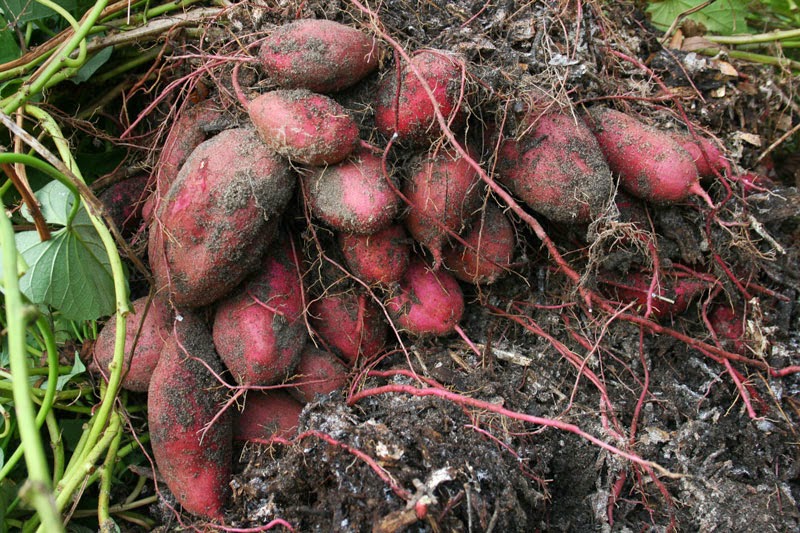
If you’re worried about supply lines, gas shortages, a survival food supply, and how many calories you need to live – this is the way to grow food fast!
Plant those root crops!
Though this is a sub-tropical system with many exotic tropical roots in it, don’t let that stop you.
Temperate Root Crops
Even in a temperate climate food forest, you can grow potatoes, Jerusalem artichokes, turnips, rutabagas, carrots, parsnips, mangels, beets, onions, garlic and more.
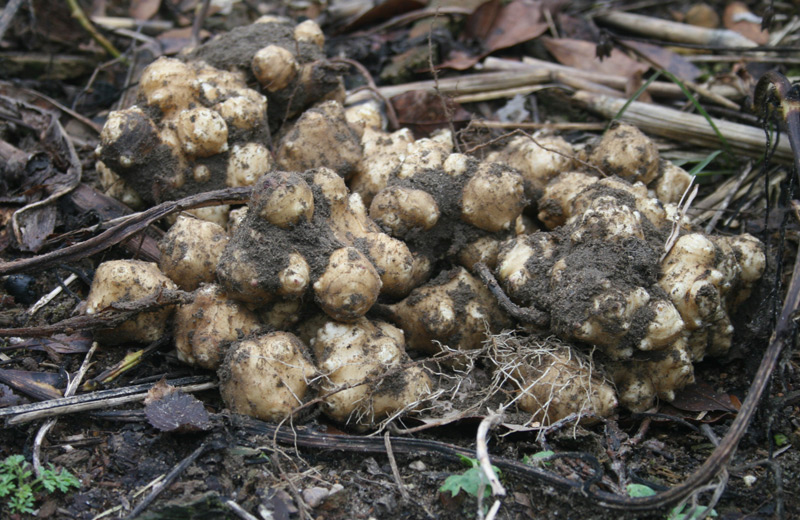
Be creative, and fill in the spaces between your fruit and nut trees with lots of high-calorie roots.
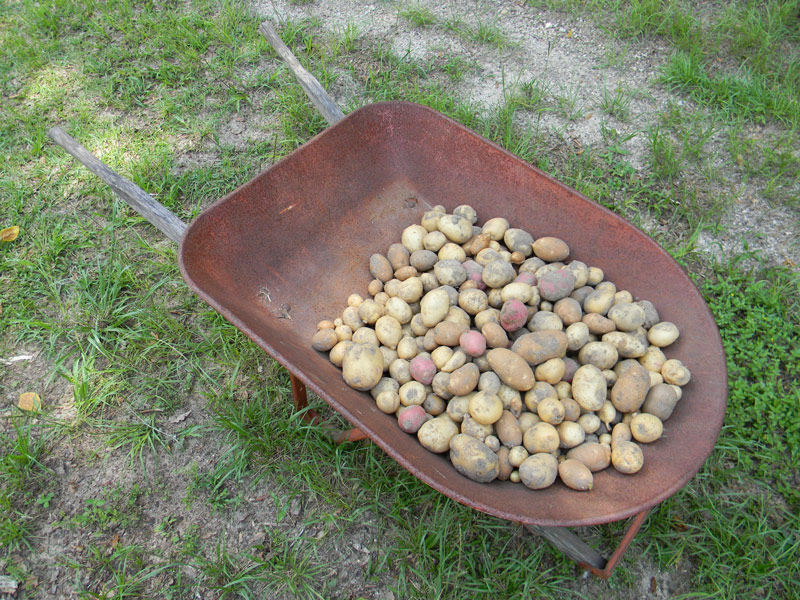
You might also add winter squash and grain corn, as well as shelling beans.
Tropical Root Crops
In a tropical food forest, you can plant bananas and plantains (which are similar to a root crop when green), yams, sweet potatoes, yacon, taro, eddoes, cassava, arrowroot, cannas, ginger, turmeric and more, getting calories and medicine in the ground as you wait for your trees to produce.
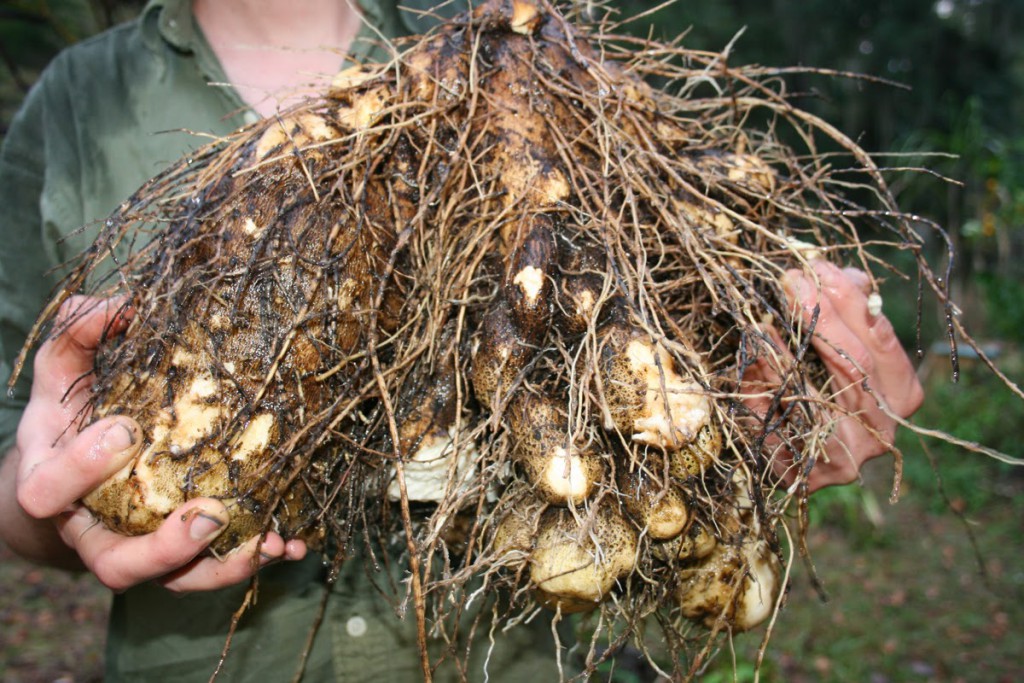
Roots really shine in the tropics, where you have lots of sunshine to build up the sugars plants need to make large roots. To this, you can also add grain corn and various tropical pumpkin/calabaza varieties.
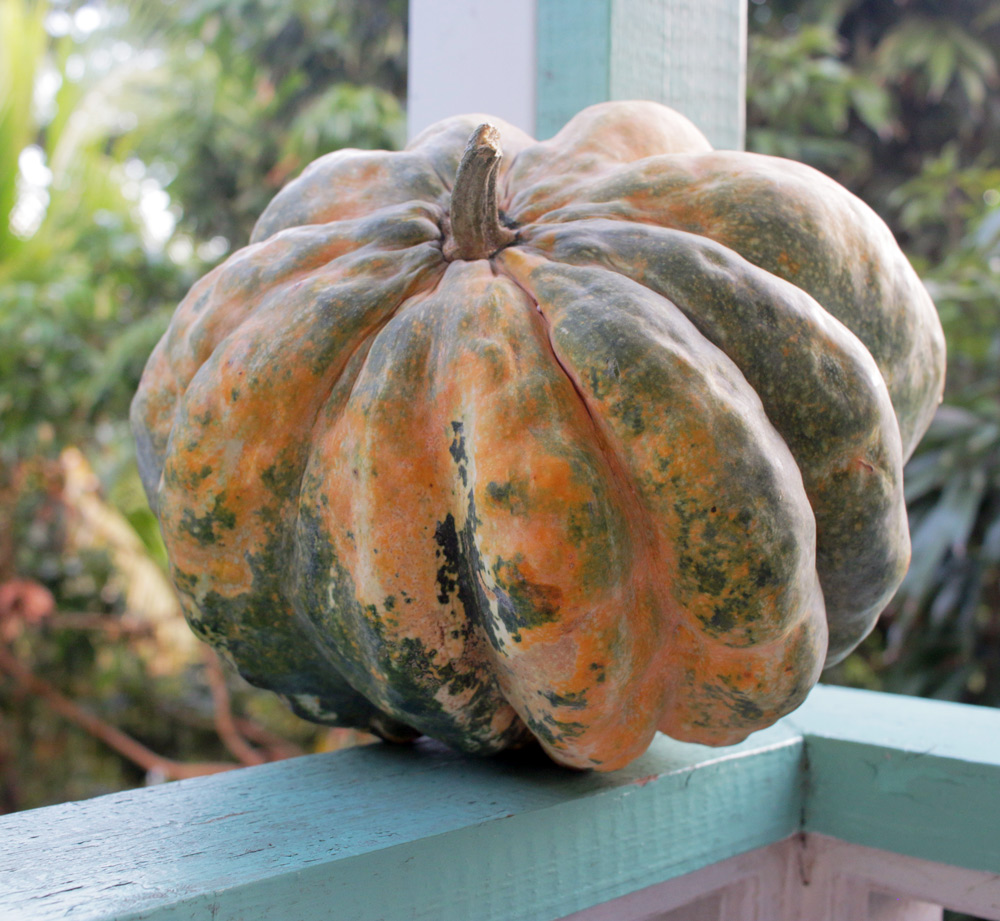
And, if you have a really tropical climate, plant some breadfruit in the food forest as well. It’s truly amazing as a food supply. We have had poor luck with dry beans in the humid tropics, but in drier areas they will do better and have less issues with rotting and molding in the shells.
Let your garden become your emergency food supply!
Good Links
Create Your Own Florida Food Forest (NEW 2nd Edition!): https://amzn.to/3KF1Su2
Grocery Row Gardening: https://amzn.to/3ef8uDp
Subscribe to the newsletter: https://thesurvivalgardener.us3.list-manage.com/subscribe/post?u=d1c57e318ab24156698c41249&id=1f74a21dc8
Compost Your Enemies t-shirts: https://www.aardvarktees.com/products/compost-your-enemies

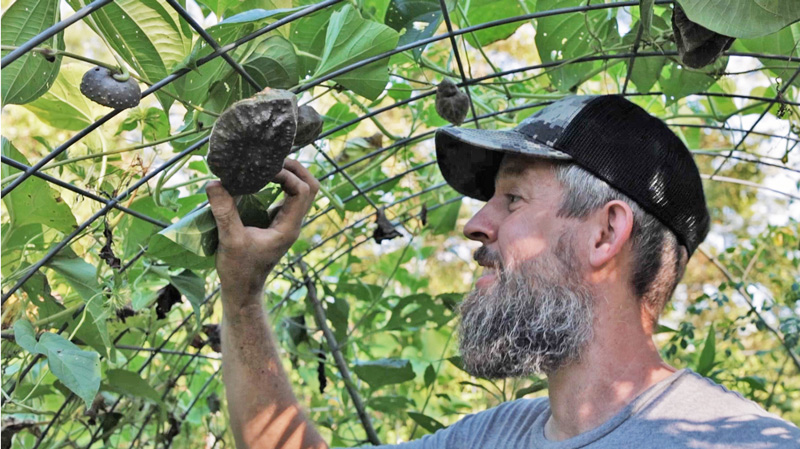
7 comments
David,
I cannot grow sweet-potatoes in the ground in southwest Mississippi because of the voles. I’ll wager that is what you have eating yours. Each year, as they learn you plant sweet-potatoes they will get worse and worse. I have had to resort to taking old chest freezers, shooting drainage holes in them, and filling with rotting wood with 18 inches of good soil on top and planting in those. I call them my huglefreezers. Works great, no bending over to harvest, and seldom need watering even in the Summer.
Dan
Yikes! I do like old freezers for planting, though. I have one on my property and am tempted to plant in it.
You can grow sweet potatoes up north as well. They love the warm summers and can just about survive the cold winters unaided (and most definitely can with help), and are slowly becoming a popular outdoor ornamental plant in Idaho and Utah. I’ve still found it’s good to keep one indoors as a potted plant to propagate of off (just incase the out-door tubers are unexpectedly killed), but if you harvest fast enough, it’s easy to get a large crop of small sweet potatoes for food and replanting.
I know you can grow them a ways up, but I don’t have experience beyond Tennessee. That is good to know – thank you.
My wife wants me to plant Asian sweet potatoes since she grew up with them and she adores them. They grow them in Korea, which gets far colder than here, so the only question is having the slips ready for planting early enough and getting irrigation on them. Which I haven’t managed to do correctly, so far.
This year I decided to plant taro in a planter, which is interesting. It has not flourished like yours, but it is pretty sturdy. Come the first frosts I will check to see how they grew.
The main joy, so far, of growing taro here is listening to people tell me it won’t grow here.
Like David Kindltot. I’m looking at asian crops in colder zones than 6. I’m in middle Tennessee but @1900 plus feet above sea level. Zone 7 down the mountain and 6a up here. 10 degrees colder up here. Planted bloody butcher corn (dent) this year. Gonna plant 2500 sq ft of bloody butcher from this years crop. It just started to tassle Monday. Any idea how many ears i need for 2500. Gonna hang purple snake beans on them. Any Asian root crops are high on my list. Potatoes aeem to be a problem here. Asian pears pears and apple have a good start going.
Dave, I’ve been trying to grow potatoes and sweet potatoes in my garden for the last 2 years… and haven’t had any success.
I don’t know what I’m doing wrong, I thought, originally, that maybe I attempted to harvest too early but if I was going to get either crop wouldn’t have I at least found something? some sign that they were coming?
Maybe some videos on when and how to harvest would be helpful?
Also, some suggestions about your new book, there is a bit of inconsistency with plant/tree profiles. Some say when and how to plant them but others do not. While yet others have harvest times and others do not. I am about halfway through reading the book, I have enjoyed your previous books, not to say I’m not enjoying it. Just some feedback.
Thanks …. a Super secret fan.
Comments are closed.